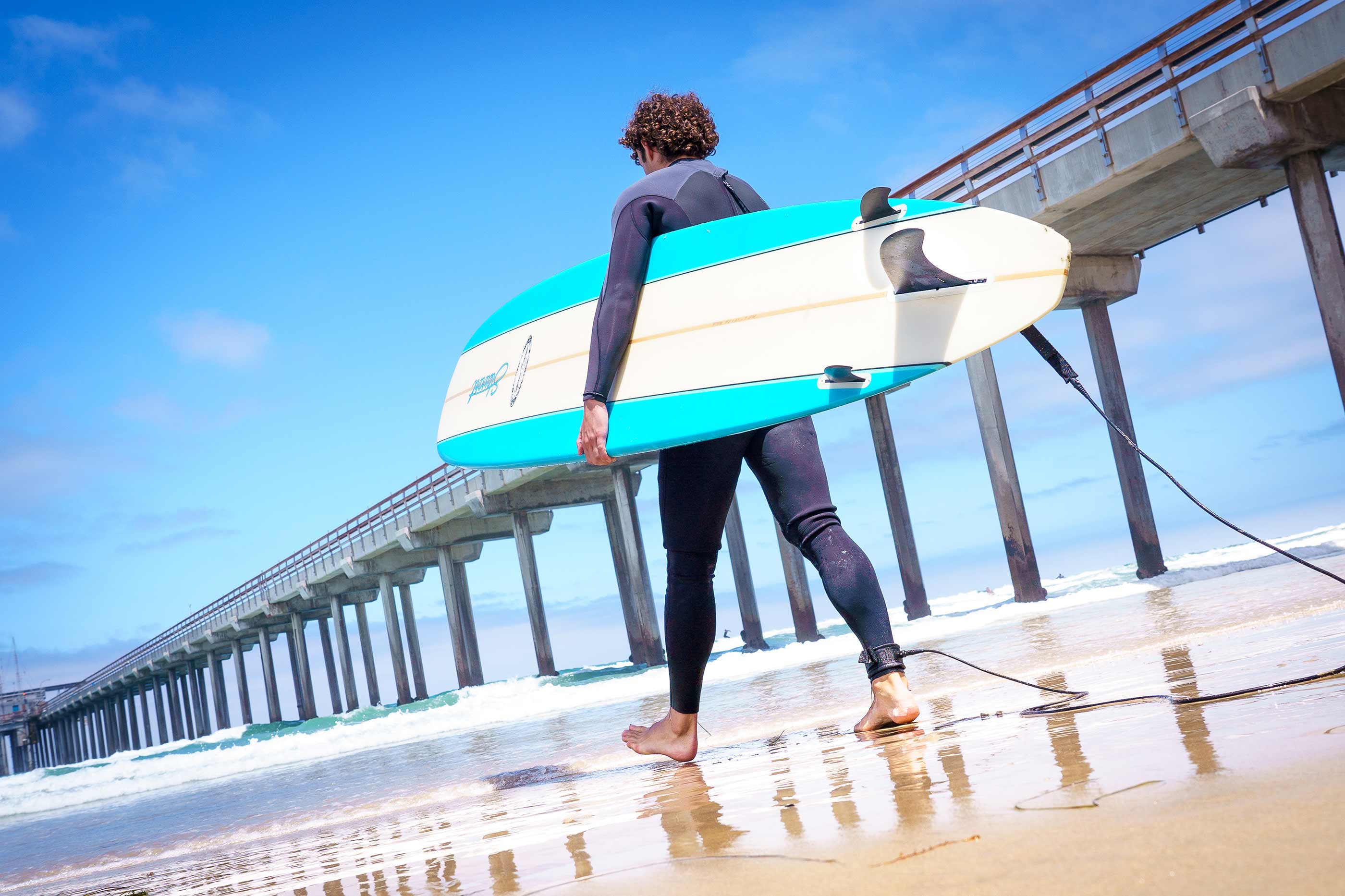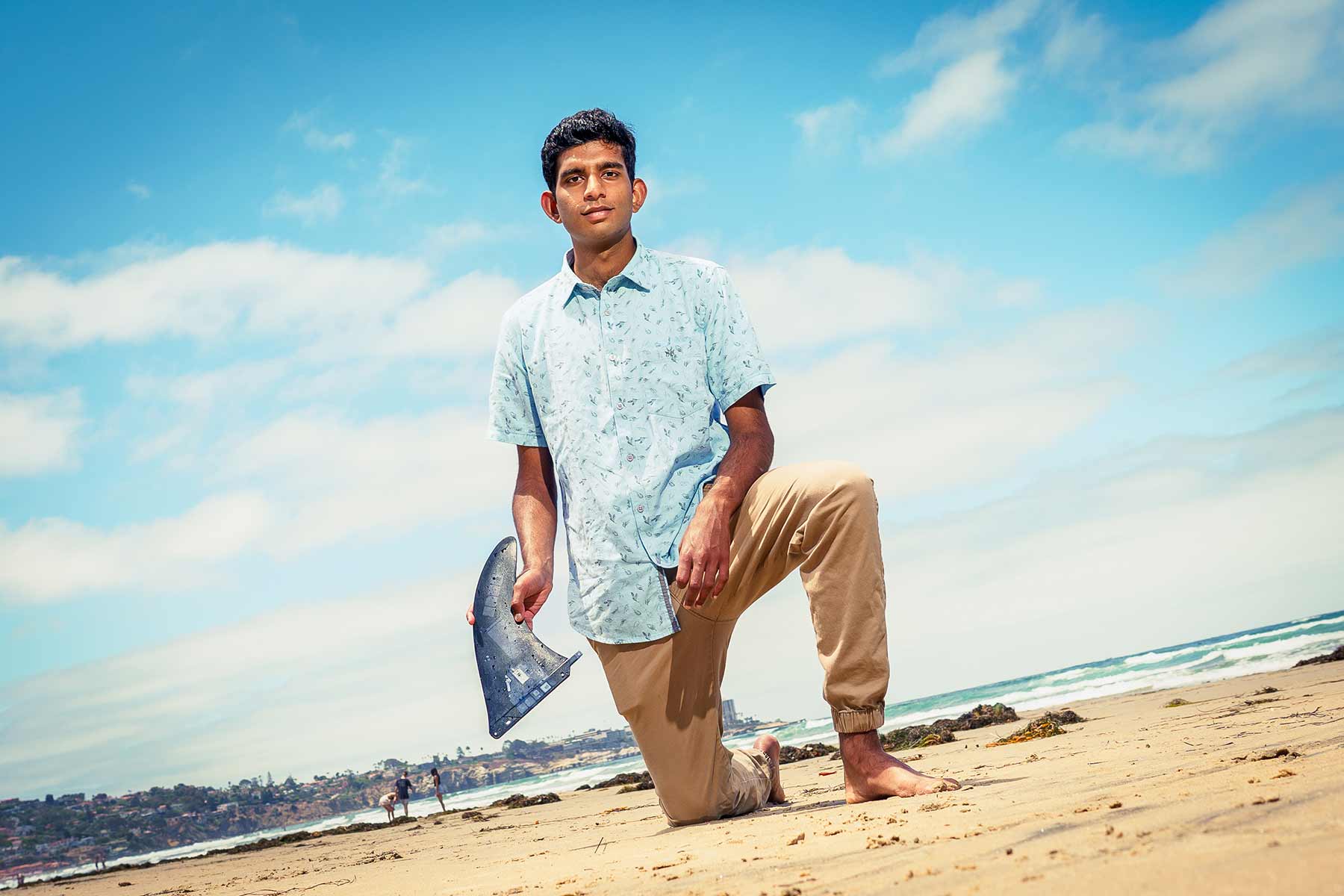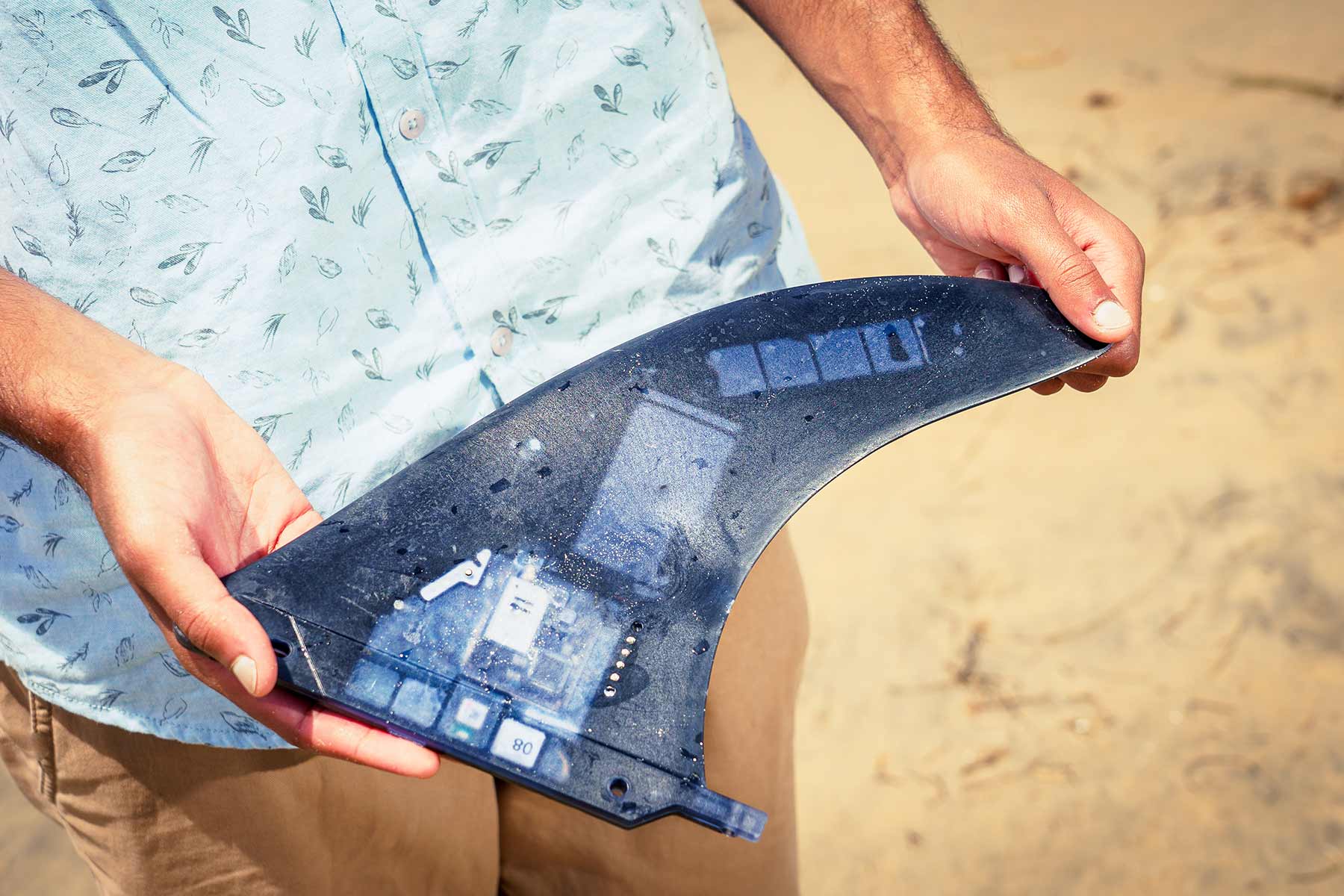UC San Diego Among Multidisciplinary Awards Providing $221M Nationally for Cutting-Edge Projects
Technology & Engineering
By:
Published Date
By:
Share This:
It’s a summer morning at La Jolla Shores and Robert O’Brien, a junior at Princeton University who is spending his summer at UC San Diego, is surfing—for science. He is participating in the Smartfin research project, which aims to improve the collection of oceanographic data near the shore.

Robert O'Brien, a Princeton junior who is spending his summer working on the Smartfin project at UC San Diego, heads out to the ocean to test the device. Photos by David Baillot/UC San Diego.
Smartfin consists of a fin that can be mounted on a surfboard, equipped with temperature and location sensors and a wireless device that transmits the data to the cloud. Researchers are developing algorithms to analyze that data and better understand what is happening to water conditions near shore. Collecting more data is important because there are very few existing tools to gather this information in the tumultuous area where waves break.
Smartfin is the brainchild of Andy Stern, who encouraged researchers at Scripps Institution of Oceanography and the Jacobs School of Engineering to take on the project through a generous donation to UC San Diego through his Lost Bird Foundation. Philip Bresnahan, an alumnus of Scripps who is now a professor at the University of North Carolina Wilmington, leads the project. At UC San Diego, Ryan Kastner, a professor in the Department of Computer Science and Engineering, leads a team of students in the Engineers for Exploration (E4E) program, who are working to improve the Smartfin. The platform is a great learning opportunity for students, he said.
“E4E allows students to take the basic knowledge that they learned in their classes and apply it to real-world problems,” Kastner said. “For Smartfin, this includes low-level computing concepts to develop interfaces between the microcontroller and the various Smartfin sensors. It involves digital signal processing to take those sensor readings and turn them into actionable information. It includes mechanical engineering concepts to properly design and build the Smartin itself. And it requires interacting with marine scientists to understand their needs and desires and match those with physical and computational constraints.”
This summer, an E4E team of undergraduate students from various universities is working to continue to improve the device. They are part of the Research Experiences for Undergraduates program funded by the National Science Foundation.

Anshul Garde, a UC San Diego sophomore, shows off the Smartfin at La Jolla Shores.
Anshul Garde, a sophomore electrical engineering student at UC San Diego, compared his work on Smartfin to trying to put together the hardware on an iPhone to deliver a good user experience.
“So far, we've been primarily working on firmware verification and validation—making sure that the internal fin system works as intended and meets expectations,” he said. “During this, the sharpest learning curve for me had to do with learning how to interact with all the various hardware components (sensors, flash memory, etc.) through software in order to form a cohesive system.”
The next step is calibrating the sensors on the Smartfin, which measure temperature, speed, magnetic fields, orientation and velocity. From an engineering point of view, adapting to near-shore conditions was the most difficult part of the job, he added.
“The hardest challenge with this is dealing with the oceanic surf zone conditions that the sensors will be subjected to, much different than sensors of a system on land,” Garde said.
The students are also learning about working on a product and in teams.
“I have learned a lot about the process behind building products,” said Allen Yang, a team member who is a sophomore at Caltech working at UC San Diego this summer. “I have never worked with products that require the rigorous testing that Smartfin requires, and this is also the first time I have taken part in field deployments.”
Working in a larger team was a new experience for the students.

The Smartfin is equipped with various devices to measure temperature, velocity, orientation and more.
“It's been really cool working with a team with different backgrounds so we can fill in each other's knowledge gaps,” said O’Brien, the Princeton junior, who is also the lone student surfer on the team this summer. “I've also learned a lot about working in a larger team. For example, the researchers want certain things from us (the fin to perform a certain way, collect certain data at a certain time, etc.) and then once we've done our job, they can actually use the data in a way that's valuable to them.”’
The Smartfin project started in 2016, and researchers have been working since then to develop ever more sophisticated devices and algorithms to interpret data. The fins have been distributed to hundreds of surfers, mostly through the Surfrider Foundation.
The team is currently seeking grant funding for the next phase of production and distribution of Smartfins. Researchers also recently described the technology and its capabilities, as well as the oceanographic research, which it has already supported in journal Continental Shelf Research.
Share This:
Keep up with all the latest from UC San Diego. Subscribe to the newsletter today.